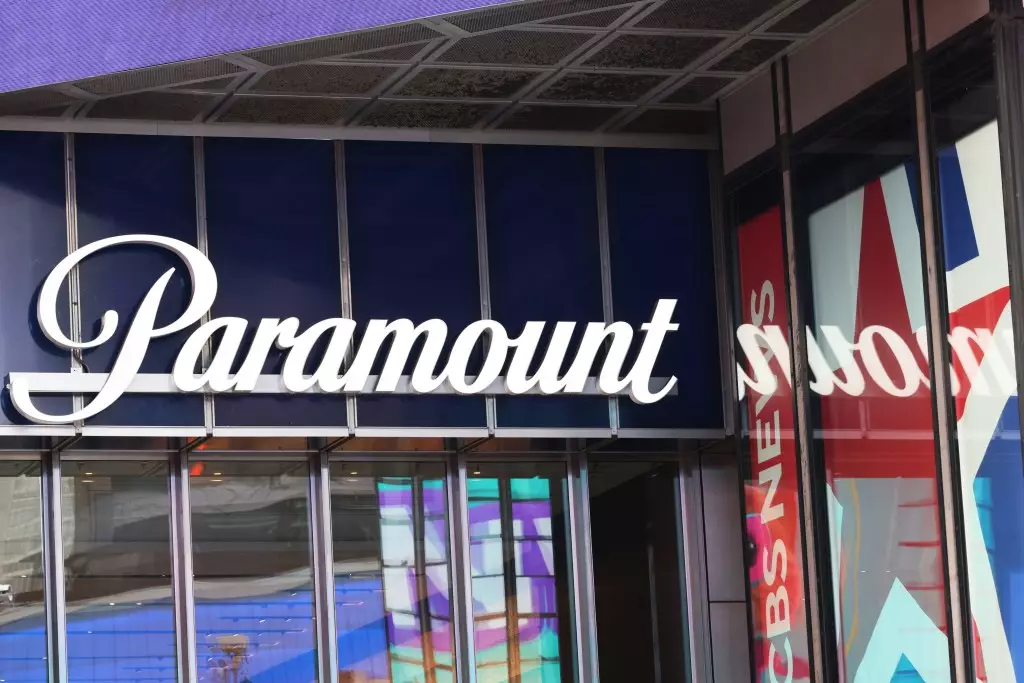The anticipation surrounding the merger between Paramount Global and Skydance Media has become a narrative marked by complexities and unforeseen obstacles. Initially projected to conclude in the first half of 2025, expectations have shifted dramatically, with significant hurdles emerging. The announcement of Paramount’s annual shareholder meeting scheduled for July 2 not only signals a change in timelines but also indicates that the anticipated union between these entertainment giants may not materialize as smoothly as initially hoped.
This annual meeting serves a dual purpose. Firstly, it invites stakeholders to engage in the company’s governance by voting on the addition of three new board members. These nominations include the seasoned attorney Mary Boies, former judge Roanne Sragow Licht, and venture capitalist Charles Ryan. The reshaping of the board is particularly notable given the recent downward trend in its membership—plummeting from four members a year ago due to various resignations as the merger plan gained traction. The current board’s composition and strategic direction will be critical in navigating the ongoing challenges surrounding the merger.
Shareholding Dynamics and Corporate Control
What sets Paramount apart is its structure as a “controlled” company, primarily influenced by the Redstone family, who hold a substantial stake. This not only streamlines decision-making but also indicates that the consolidation with Skydance won’t conform to traditional shareholder voting protocols—an aspect that might raise eyebrows among investor factions wary of the implications of limited democratic processes in corporate governance.
The absence of a shareholder vote allows a more agile response to market shifts, but it does likewise centralize decision-making authority, placing immense responsibility on the shoulders of the existing leadership. Paramount’s governance apparatus will need to exhibit transparency, particularly as they vie for shareholder confidence amidst a dilution of board influence and volatile market conditions.
Regulatory Hurdles: The FCC and Trump’s Shadow
The most significant barrier to consummating the merger lies within regulatory scrutiny, specifically the approval from the Federal Communications Commission (FCC). Here, political entanglements have created an intricate web of delays and uncertainties. The current FCC review is overshadowed by a contentious lawsuit initiated by Donald Trump against CBS, which complicates matters further given the commission’s supposed impartiality.
Despite the insistence from FCC Chair Brendan Carr that the review of the merger is independently managed, many industry analysts view the specter of Trump’s legal battles as an unavoidable distraction. Paramount’s failure to navigate this labyrinth of regulatory challenges could have repercussions far beyond their merger ambitions. Observers are acutely aware that both Redstone and Skydance supporter Larry Ellison are recognized for their connections to Trump, and yet this alignment has not translated into a smoother regulatory process, raising questions about the influence of personal grievances over corporate interests.
A Transformative Journey Amidst Uncertainty
In the face of these multifaceted challenges, Paramount’s leadership remains determined to emphasize the company’s adaptability. Co-CEOs George Cheeks, Chris McCarthy, and Brian Robbins have expressed pride in what they characterize as a “transformative year” for the company, despite the surrounding turbulence. Their message underscores a commitment to resilience, signaling to shareholders that Paramount is more than merely a vessel for the proposed merger; it seeks to maintain relevance in an evolving entertainment landscape.
While they navigate the regulatory maze and pursue strategic board changes, Paramount must remain attuned to the broader landscape of the media industry, often shifting in response to technological advancements and consumer preferences. The narrative of merger speculation is overshadowed by precise actions that either contribute to or detract from the health of the company as it searches for equilibrium in a highly competitive market.
The tangled interplay between corporate ambitions and external forces reveals the challenges inherent in managing large-scale mergers. Paramount’s journey with Skydance serves as a poignant reminder that in today’s fast-paced media environment, agility, transparency, and decisive governance may be just as pivotal as the business outcomes they hope to achieve.


Leave a Reply